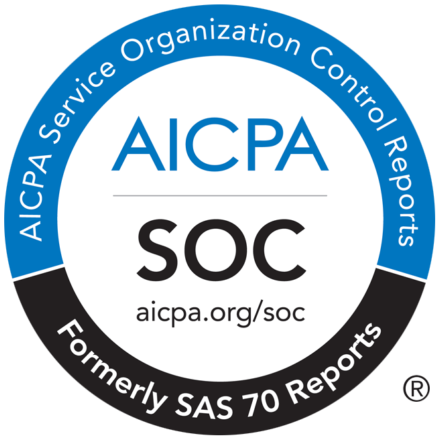Plagiarism is not a new construct. Students have been found copying text from sources without citations in the past. However, the startling rise in the number of students caught plagiarizing every year is a matter of grave concern. Plagiarism in college shows the lack of academic integrity. Students’ academic record is affected due to plagiarism, but the reputation of educational institutes reporting several plagiarism cases also suffers.
The essential requirement for writing a thesis is to create new knowledge, and the use of plagiarized content defeats the core purpose of research.
No new knowledge is presented through a plagiarized academic paper because other authors already establish the presented ideas. It is a form of academic dishonesty. Students can learn nothing from plagiarized papers. Hence, plagiarism is not useful in any way.
Who Is the Culprit Behind Plagiarizing
Often one blames the intent as the culprit behind the plagiarizing propensity of students. To some extent, this assumption is correct. The use of the internet for accessing free information has led students to copy text from any source. In addition to that, there are essay mills that provide students with completed academic papers.
Students can place an order for a particular paper through such essay mills. This kind of service has further reduced the research inclination among students. College students can purchase papers via the internet and then submit those. This shortcut is crippling the research ability of students.
However, blaming the internet for the downfall of high school students who choose to plagiarize is not entirely correct. Students often try to take help from available external sources. Lack of confidence in original work and laziness are important factors that drive students to plagiarize from several sources. Nearing deadlines and low grades are also significant reasons that force students to submit a plagiarized paper instead of working individually on the assigned research topic.
Typical Forms of Plagiarism in College Papers
There is a prevalent misconception that only word-to-word text copying without any citation is termed plagiarism. However, plagiarism has various forms. It is vital to know the different kinds of plagiarism that are found in research papers of college students:
- Text cloning:
It is the most common form of plagiarism where information from any source is copied and pasted in the research document. Any plagiarism checker can detect this form of plagiarism.
- Synonym substitution:
In this case, the students do not simply paste the copied text. They try to change the appearance of the text by replacing certain words or phrases with synonyms.
- Combining multiple sources:
In this type of plagiarism, portions of important information from different sources are combined to prepare the research thesis. The combined ideas get presented as unique research.
The ideas are either mixed harmoniously or are left disjointed. In the latter form, plagiarism is evident, but plagiarism software is used to detect the copied ideas or passages in the former case.
- Self-plagiarism:
When significant portions of a previously published research paper are reused without any citation by the same author, it is self-plagiarism. Unintentional self-plagiarism can be detected with a text-compare tool.
Lack of Original Content
In this form of plagiarism, students might provide the correct citations for the reference sources, but the entire thesis is an aggregate of cited passages. This kind of research paper also gets considered plagiarized because it offers no or very few new inferences.
- False citations:
Students use erroneous citations in the works cited page to increase the number of reference articles used for the paper. However, in reality, those are wrong citations that either do not exist or are wrongly attributed.
- Mosaic plagiarism:
One deliberately does it to create a false impression of holistic research. There are correctly cited passages in this kind of plagiarism, but these got mixed with copied paragraphs that do not have any citation.
How to Create Plagiarism Awareness Among College Students
Providing information to students on plagiarism rules in college and the effect of plagiarism on students’ academic records is helpful.
However, apart from merely providing information on plagiarism, educators have to instill the research instinct among students. Instead of taking a reactive stance, it is better to be proactive and urge students to use a thesis checker for checking their papers. Students should have enough time to complete an assignment. Teachers should mention the requirements for completing the document, and the format and style should be informed in the beginning.
Supervisors can assign unique topics to the students to prevent plagiarism. Further, teachers should ask for weekly reports to assess the research progress. Checking the students’ drafts minimizes the chances of plagiarism as it is not possible to submit successive plagiarized drafts.
How to Bring Down Cases of Plagiarism in College
Teaching students about the consequences of plagiarism in college helps in deterring them from copying information. A zero-tolerance policy has to be followed to eliminate plagiarism in college. It is possible when students have full information regarding the long-term and short-term penal measures present for plagiarism.
It is vital to evaluate the intentional or accidental nature of the plagiarism present in the student’s paper before determining the penal action. However, it is essential to take action against plagiarism.
New students who have accidentally plagiarized in the paper should have a second chance to resubmit the paper. However, in the case of deliberate plagiarism, adequate action has to be taken against the student so that other students are not inclined to follow the unethical route of plagiarism.
Expulsion or indefinite suspension is an extreme measure for plagiarism cases. However, if a student repeatedly submits plagiarized research papers, then this form of action can be taken against the pupil.
It is vital to take stringent measures against students who submit plagiarized content repeatedly to detect plagiarism in college actively. Hence, academic papers in college should be checked with a university plagiarism checker to quickly detect duplicated content.

